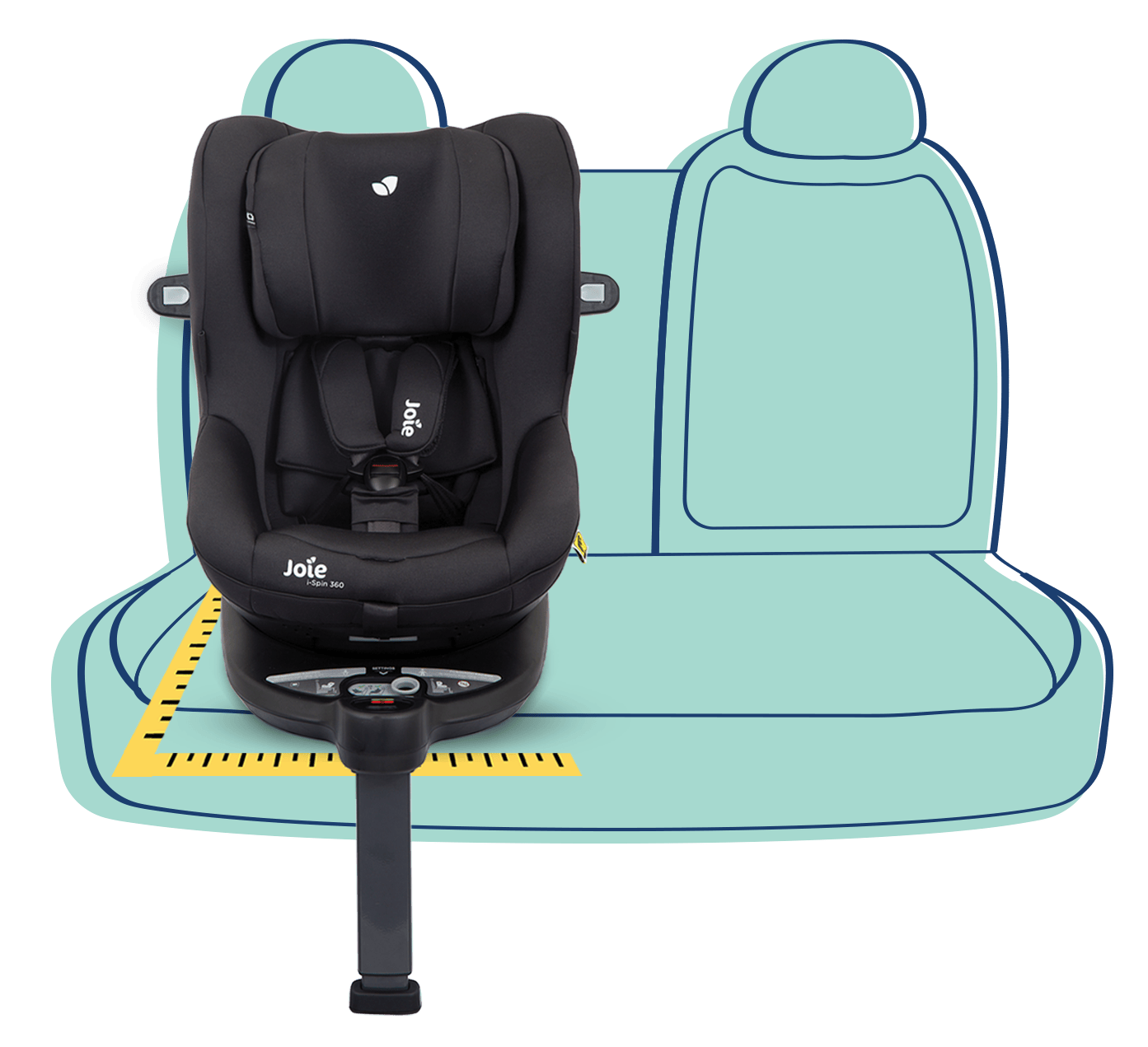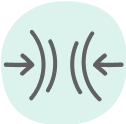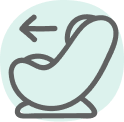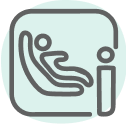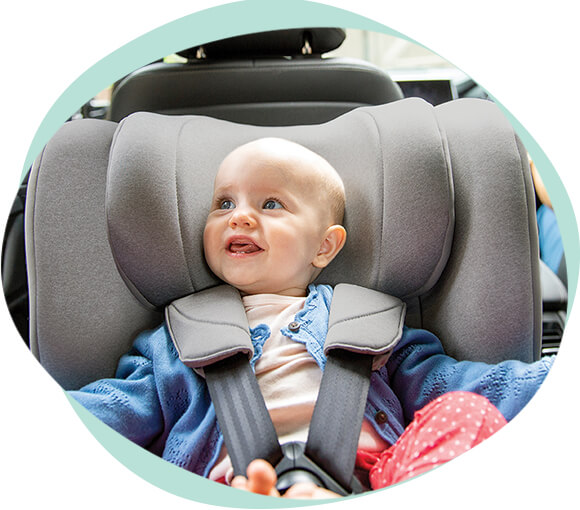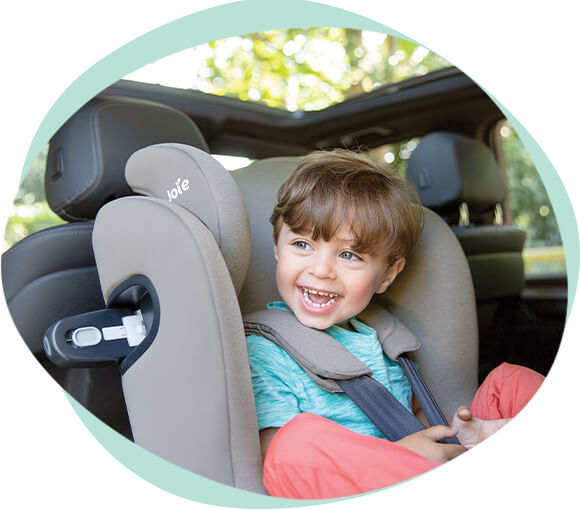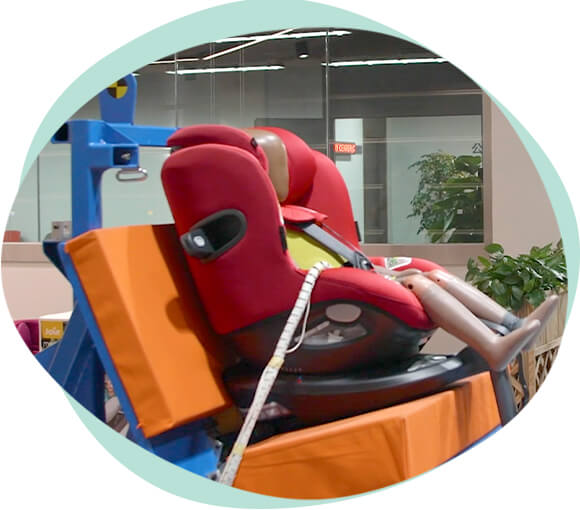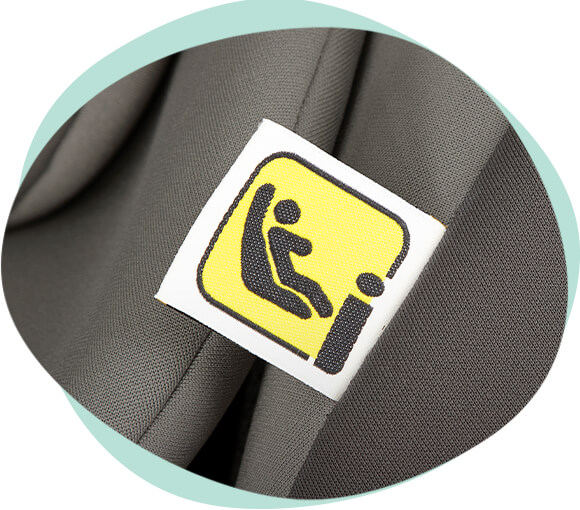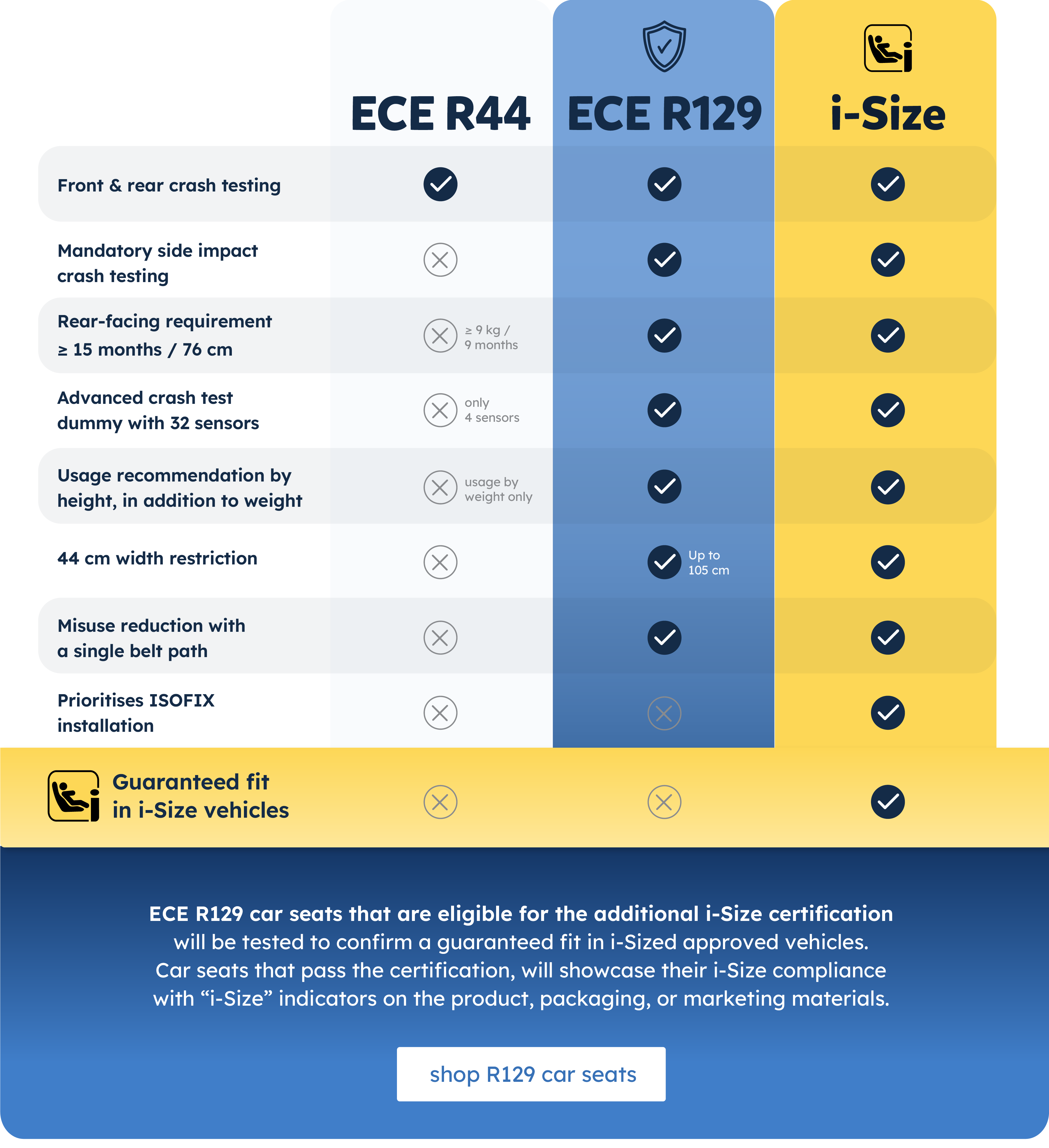This is a demo store. No orders will be fulfilled.
i-Size is an enhancement of ECE R129

ride with confidence.
ride with
confidence.
ride with “i”.
*The only car seat that is an exception to this rule is spin 360™️ GTi, which is both ECE R129 regulated and i-Size certified.
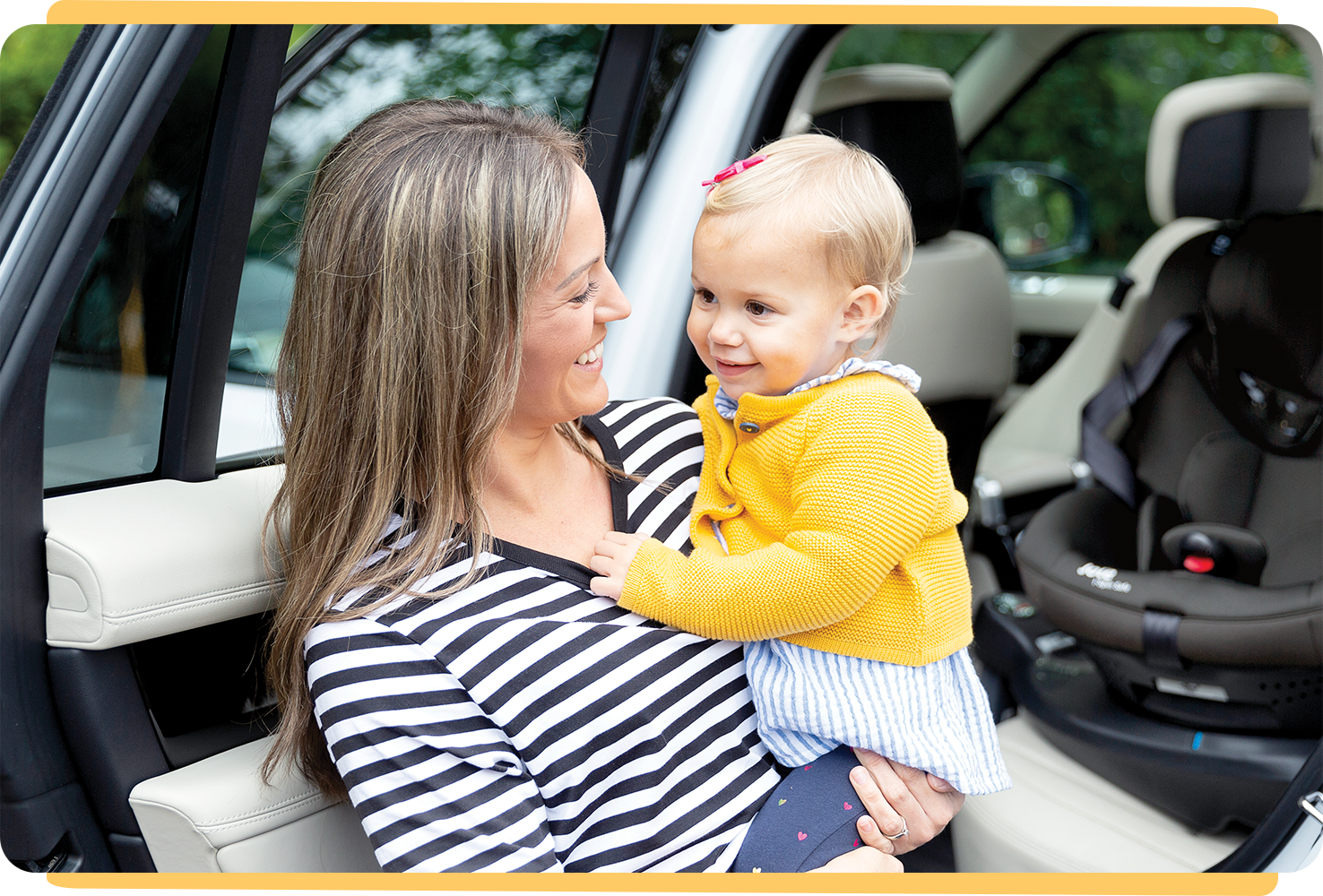
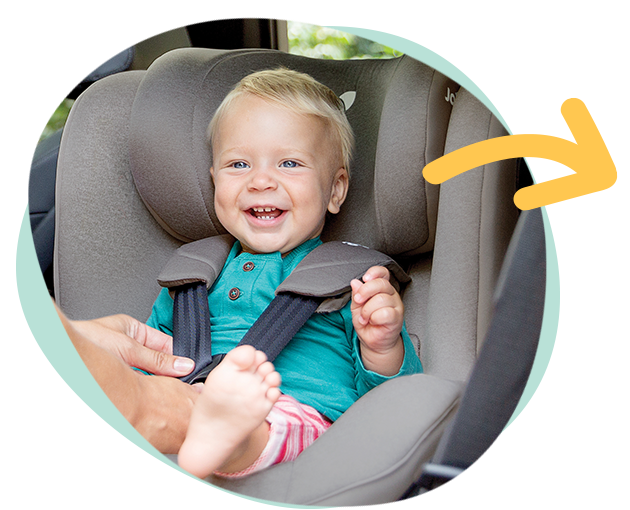
ECE R129 or i-Size…
what's the difference?
ECE R129
European safety regulation
i-Size
enhancement of ECE R129
ECE R129 & i-Size Q&A
What is ECE R129?
How will ECE R129 keep my child safer?
Is ECE R129 the same thing as i-Size?
Why is forward-facing not permitted until at least 15 months?
Why is side-impact testing and standardisation so important?
What vehicle features does i-Size require?
Are all R129 seat i-Size?
Do all i-Size seats use ISOFIX for installation?
Do ECE R129 car seats have width rescrictions like the i-Size certification?
Can I use 3 i-Size car seats in a row on my vehicle seat?
How can I fit 3 i-Size car seats across if my vehicle only has 2 outer i-Size seating positions?
Can I always use my booster seat's ISOFIX connectors if I’m fitting it into an i-Size certified seating position in the vehicle?
If ECE R129 & i-Size car seats are now height based, why is weight still important?
What has changed under Regulation ECE R129 regarding car seats installed by vehicle seat belts instead of ISOFIX?
Why can’t my every stage R129 face forward in the harness mode?

